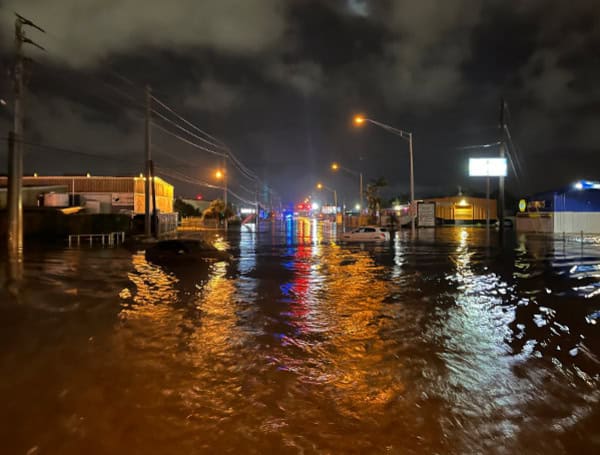In a swift response to the devastating flooding that has engulfed multiple regions of Florida, Governor Ron DeSantis has taken decisive action by declaring a state of emergency.
This declaration covers several counties, including Broward, Collier, Lee, Miami-Dade, and Sarasota, all of which have been significantly impacted by the relentless downpours and rising waters.
The catalyst for this emergency declaration was a tropical disturbance known as Invest 90L, which has been unleashing torrential rains across the Sunshine State. Meteorologists have reported that some areas have experienced over 8 inches of rainfall within a mere three-hour span, leading to widespread and dangerous flooding conditions.
Read: Florida Appeals Court Sidesteps ‘Executive Privilege’ Issue
Governor DeSantis’ executive order highlights the widespread nature of the flooding, noting that “preliminary reports indicate that the rainfall and flooding has affected and may continue to impact the operational capability of critical infrastructure, including major interstates, state and county roadways, airports, schools, and other critical infrastructure throughout these counties.”
In response to the unfolding crisis, the governor has stated that Kevin Guthrie, the director of the Florida Division of Emergency Management, and his team will be on-site to coordinate the state’s relief efforts. This proactive approach aims to ensure that necessary resources and support are swiftly deployed to the affected regions.
The situation remains fluid, as meteorologists anticipate additional rounds of heavy rain and thunderstorms in the coming days, further exacerbating the already dire flooding conditions across South Florida’s metropolitan areas. This confluence of factors has prompted the state of emergency declaration, which will remain in effect for 60 days unless extended.
Sarasota County has been particularly hard-hit, with the governor acknowledging the significant flooding that has occurred in the region. According to reports, more than 8 inches of rain fell in Sarasota within just three hours on Tuesday, underscoring the intensity of the storm system.
Read: Florida Gov. DeSantis Signs $116.5 Billion “Focus On Florida’s Future” Budget
In addition to Sarasota, the state of emergency declaration also includes Broward, Collier, Lee, and Miami-Dade counties, all of which have experienced the devastating impacts of the heavy rainfall and subsequent flooding.
Alongside the governor’s statewide declaration, local authorities have also taken action. Miami-Dade County Mayor Daniella Levine Cava has declared a state of emergency for the county, while Fort Lauderdale Mayor Dean Trantalis has done the same for the city.
The timing of this flooding event is particularly concerning, as it coincides with the onset of the hurricane season. Meteorologists have emphasized the importance of staying vigilant and prepared, as the state’s infrastructure and communities may face additional challenges in the months ahead.
The flooding has the potential to disrupt the daily lives of residents, impact local businesses, and strain the region’s critical services. Authorities are urging residents to heed all safety advisories and to take proactive measures to protect themselves and their property.
Help support the Tampa Free Press by making any small donation by clicking here.
Android Users, Click To Download The Tampa Free Press App And Never Miss A Story. Follow Us On Facebook and Twitter. Sign up for our free newsletter.

